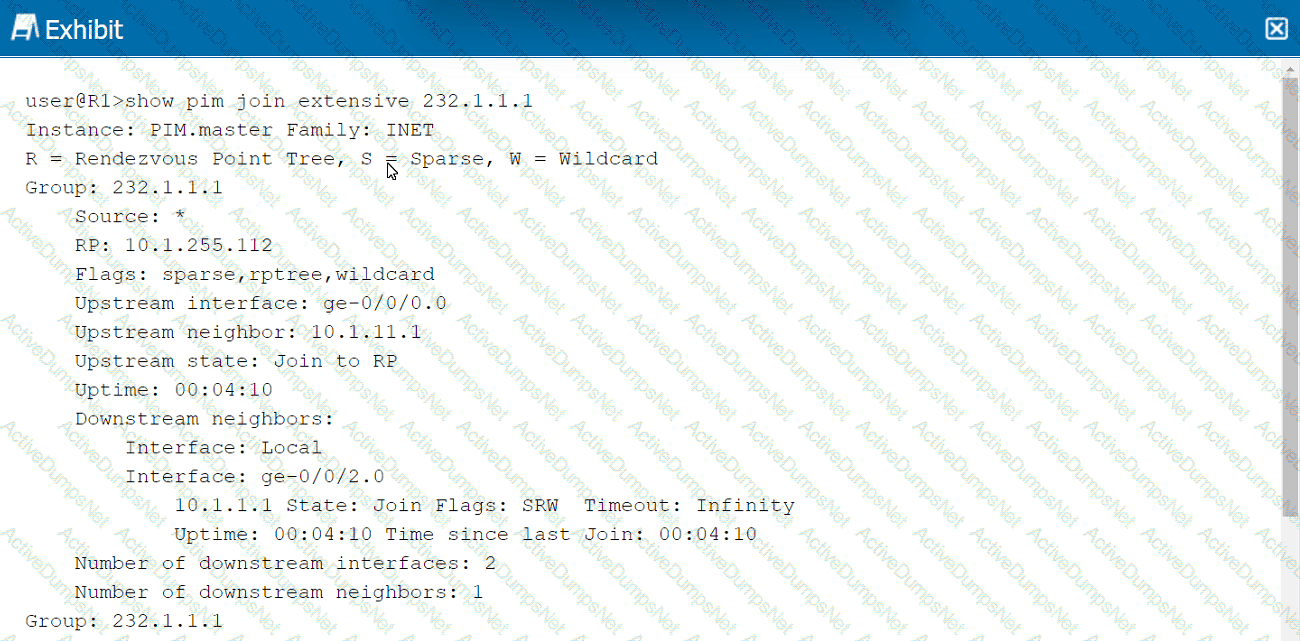

Click the Exhibit button.
Referring to the exhibit, which two statements are correct regarding the output shown in the exhibit? (Choose two.)
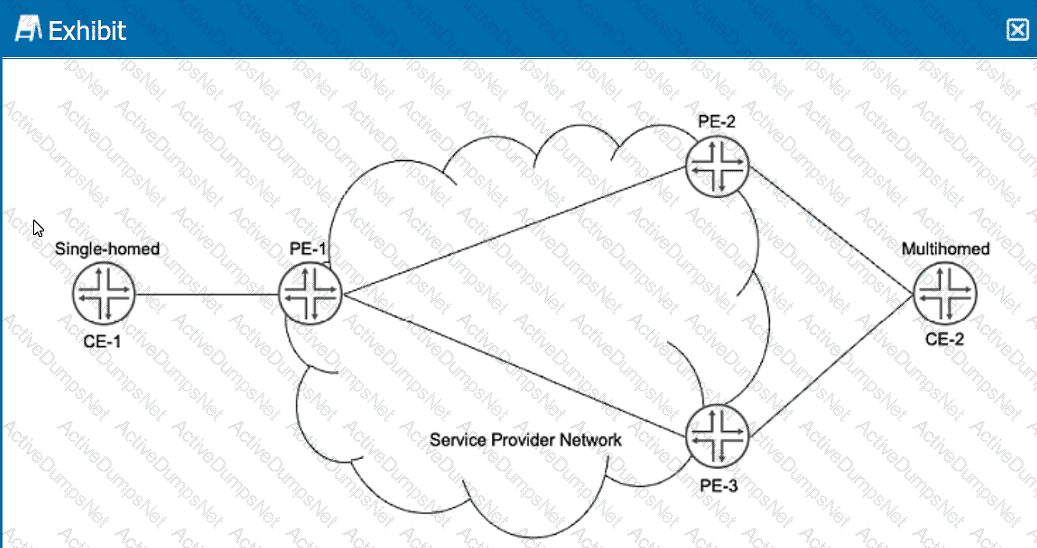
Click the Exhibit button.
You have an EVI implemented between PE-1, PE-2, and PE-3 to allow communication between CE-1 and CE-2. CE-2 receives unicast traffic from CE-1 on both links to PE-2 and
PE-3. When CE-1 sends broadcast traffic, CE-2 receives it on only one of the multihomed links.
Referring to the exhibit, which EVPN route type enables this behavior?
Exhibit
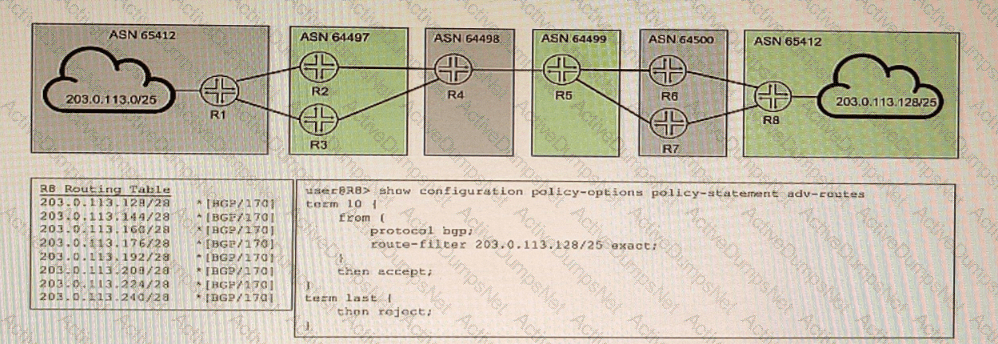
You are attempting to summarize routes from the 203.0.113.128/25 IP block on R8 to AS 64500. You implement the export policy shown in the exhibit and all routes from the routing table stop being advertised.
In this scenario, which two steps would you take to summarize the route in BGP? (Choose two.)
Which three statements about IS-IS in a multi-area network are correct? (Choose three.)
In IS-IS, which two statements are correct about the designated intermediate system (DIS) on a multi-access network segment? (Choose two)
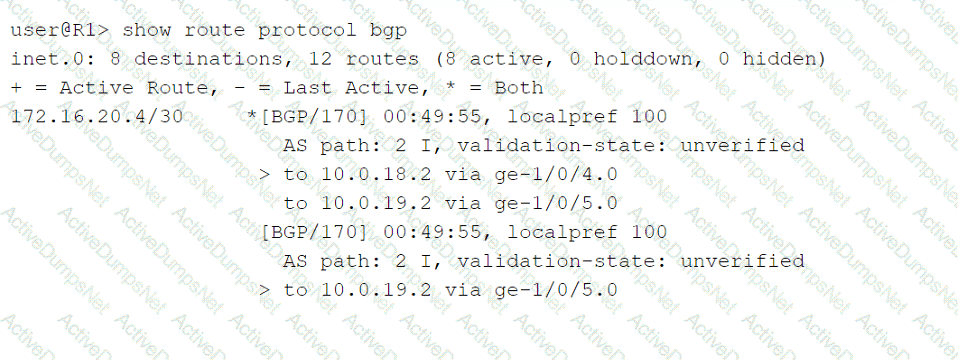
Click the Exhibit button.
Referring to the exhibit, which two statements are true? (Choose two.)
Exhibit

Click the Exhibit button-Referring to the exhibit, which two statements are correct about BGP routes on R3 that are learned from the ISP-A neighbor? (Choose two.)
You are configuring a BGP signaled Layer 2 VPN across your MPLS enabled core network. In this scenario, which statement is correct?
Click the Exhibit button.
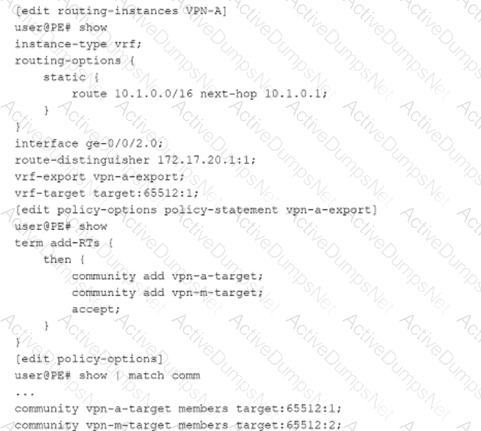
Referring to the exhibit, which statement is correct?
Exhibit
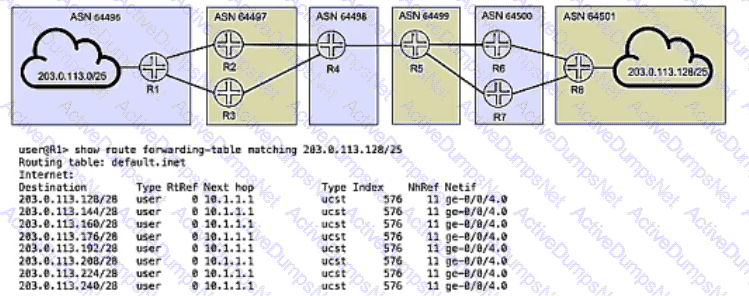
You are troubleshooting the connection between AS 64496 and AS 64497 and notice that only one of the paths is being used for traffic forwarding.
Referring to the exhibit, which three actions will ensure that R1 is configured properly for load balancing BGP routes? (Choose three.)
Exhibit
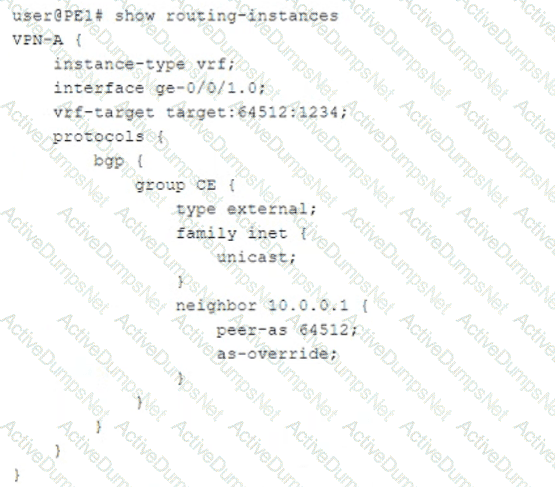
Which two statements about the configuration shown in the exhibit are correct? (Choose two.)
You are configuring anycast RP for load balancing and redundancy in your PIM-SM domain. You want to share active sources between RPs.
In this scenario, what are two solutions that will accomplish this task? (Choose two.)
You want to ensure that L1 IS-IS routers have only the most specific routes available from L2 IS-IS routers. Which action accomplishes this task?
Which two statements are correct about a sham link? (Choose two.)
You are configuring a Layer 3 VPN between two sites. You are configuring the vrf-target target : 65100:100 statement in your routing instance.
In this scenario, which two statements describe the vrf-target configuration? (Choose two.)
Which two statements are correct about reflecting inet-vpn unicast prefixes in BGP route reflection? (Choose two.)
Which two statements are correct about VPLS tunnels? (Choose two.)
You have an L2VPN connecting two CEs across a provider network that runs OSPF. You have OSPF configured on both CEs.
Which two statements are correct in this scenario? (Choose two.)
Exhibit

You want to use both links between R1 and R2 Because of the bandwidth difference between the two links, you must ensure that the links are used as much as possible.
Which action will accomplish this goal?
Exhibit

Referring to the exhibit, you are receiving the 192.168 0 0/16 route on both R3 and R4 from your EBGP neighbor You must ensure that R1 and R2 receive both BGP routes from the route reflector
In this scenario, which BGP feature should you configure to accomplish this behavior?

Click the Exhibit hutton.
You are configuring an interprovider Option C Layer 3 VPN to connect two customer sites.
Referring to the exhibit, which three statements are correct? (Choose three.)
You must alter class-of-service values in packets on the outbound interface of an edge router.
In this scenario, which CoS component allows you to accomplish this task?
Exhibit

Referring to the exhibit, which three statements are correct about route 10 0 0.0/16 when using the default BGP advertisement rules'? (Choose three.)
You have an L2VPN connecting two CEs across a provider network. The CEs and provider network are configured with the default MTU setting. You use the ping command from one
CE to the other CE with a size of 1500 bytes.
In this scenario, which statement is correct when using the ping command?
Exhibit

Referring to the exhibit, which two statements are true? (Choose two.)

Click the Exhibit button.
PE-1 and PE-2 are configured with LDP-signaled pseudowires to provide connectivity between CE-1 and CE-2. You notice no connectivity exists between CE-1 and CE-2.
Referring to the exhibit, which two statements describe potential causes for this fault? (Choose two.)
Exhibit.


Referring to the exhibit, what must be changed to establish a Level 1 adjacency between routers R1 and R2?
Exhibit
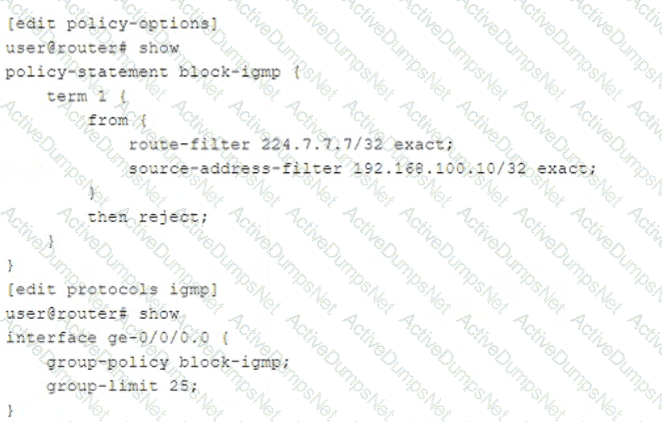
Based on the configuration contents shown in the exhibit, which statement is true?
Exhibit

You are examining an L3VPN route that includes the information shown in the exhibit
Which statement is correct in this scenario?